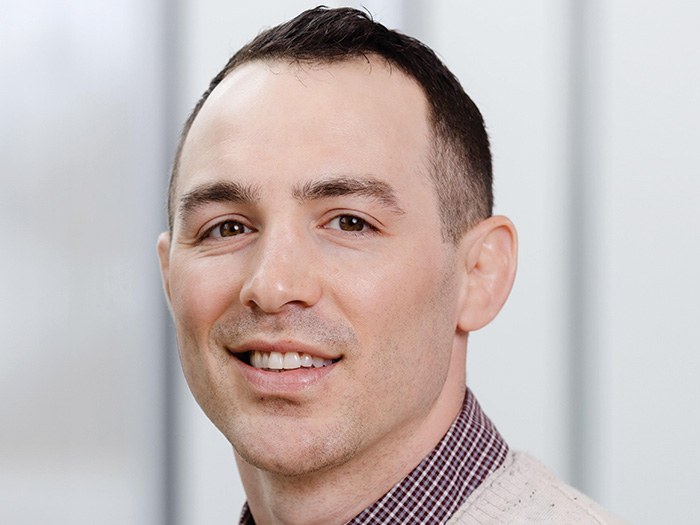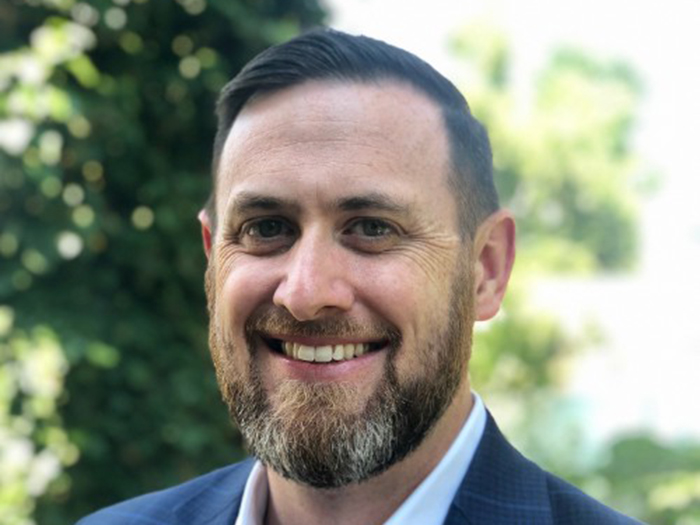Sponsored Content by Ironshore
3 Trends Disrupting Professional Liability Insurance for the Long-Term Care Sector

Today, the average life expectancy in the U.S. is over age 78, according to the National Center for Health Statistics. Industry observers report that 70% of individuals over the age of 65 will require some type of long-term care services during their lifetime. As the American population ages and baby boomers retire, long-term care facilities will be in high demand and the demands of those residents are dramatically different from those of prior generations.
Consequently, to improve their competitive edge and provide the level of care expected by seniors, long-term care facilities are expanding their service offerings. Beyond traditional medical services and assistance with daily living, long-term care facilities are now offering specialized memory care services, on-site physical therapy, access to doctors in-person and virtually, wound care, prescription delivery and short-term rehab services.
Additionally, to enhance the resident experience, long-term care facilities also offer amenities such as built-in movie theaters, a variety of restaurants, spa services, 24-hour concierge, transportation, golf carts, grocery stores and more.
Capital for the sector is growing, too. Mergers and acquisition activity remains high and ground is breaking on new construction projects across the country. Due to the impending “silver tsunami”, new medical professional liability insurers have entered the space, and as such, the market has experienced multiple years of declining rates due to competition. But as litigation increases and the cost of claims — both defense and settlement — increases, the marketplace is shifting.
“We’re quickly coming out of a soft market,” said Katie Wagner, Vice President and Long-Term Care Product Manager at IronHealth, Ironshore’s Healthcare Unit. “We’ve seen carriers enter this market in the last ten years, and to gain market share, they have reduced prices, increased limits, and expanded coverage terms. Now, as claim values increase at a higher frequency, several insurers are exiting the space due to a lack of adequate funding to cover losses.”
While a shrinking set of competitors creates opportunity for remaining insurers, it could put an incredible burden on long-term care facilities, who could be left without support on open claims and with limited coverage options. Those who wish to remain committed to the space have essentially two options: Remediate their portfolios by seeking rate increases and re-structuring individual placements or exit the market entirely.
In addition to disrupting medical professional liability insurers who focus on long-term care, the following trends are also impacting the facilities, their staff, and the resident experience.
1. Longer lifespans, enhanced service offerings, new technologies and changes to ownership structures expose long-term care facilities to a variety of new exposures.

Katie Wagner, Vice President and Long-Term Care Product Manager at IronHealth
As Americans live longer, they are entering long-term care facilities at an increasing pace, staying longer and often requiring higher levels of care for extended periods of time. Today’s seniors are accustomed to a higher standard of living and enter long-term care facilities with expectations of enhanced services.
Additionally, seniors who don’t yet need the full spectrum of healthcare services offered by a skilled nursing facility are attracted to independent and assisted living facilities who are less institutional, more homelike, and who optimize resident privacy, dignity, choice.
Enhanced services along with new technology such as electronic medical records, ridesharing, telehealth and social media create additional exposures. Long-term care facilities are now facing new and difficult questions regarding where their data is hosted, the level and sophistication of their encryption, and practically, how well their staff is trained to use new EMR systems to ensure compliance and proper documentation. Owners are tasked with ensuring they have proper policies and procedures in place to mitigate risk while allowing residents to take advantage of new technologies.
“It’s important that risk management programs keep pace with the expansion of services and exposures,” said Farah Khan, Vice President and Director of Business Development for IronHealth. “Small to mid- size long term care providers are under pressure to secure comprehensive coverage that responds to increased liability exposures without sacrificing profit margins, which are being squeezed by the increasing expense required to meet the expectations of their expanding resident population.”
Complex ownership structures, mergers and acquisitions and distressed sales also contribute to new exposures for owners and insurers to consider.
Through June of this year, over 140 mergers or acquisitions have been announced or closed, according to Bloomberg. To combat declining reimbursement rates, long-term care facilities have shifted focus to improving operational efficiencies via economics of scale, but these transactions introduce several complexities.
As long-term care operations increase in size, it becomes more difficult to enforce consistent risk management practices across the enterprise. Size can also be a factor in attracting attention from savvy plaintiff attorneys.
2. Legal and regulatory challenges abound. Jury awards are rising in scale, and more plaintiff’s attorneys are pursing cases.

Farah Khan, Vice President and Director of Business Development for IronHealth
The senior care industry is one of the most regulated industries in the country. While the federal government, through CMS, plays an important role in oversight, individual states have the primary responsibility for verifying compliance, which is evaluated through annual inspections.
Poor performers can be subject to sanctions, fines, and penalties depending on the severity of their deficiencies, which can range from additional trainings, plans of correction, appointment of temporary management, and termination from the Medicare and Medicaid programs.
“Through the CMS star rating process and publication, long-term care facilities are motivated to maintain a high rating as it helps in attracting new residents and helps in fending off aggressive plaintiff attorneys who are looking for easy targets,” explained Khan.
Across the senior care industry, litigation is growing. While litigation involving discrete negligent acts by a staff member still occur, there has been a rise of litigation alleging corporate negligence, more commonly known as the “profits over people” theory.
“We’re seeing larger verdicts more frequently,” Wagner said. “There is a trend of jury awards reaching into the tens of millions of dollars for compensatory damages. And when punitive damages are awarded, which are often multiples of the compensatory damages, we’re seeing the juries trying to send a message to the industry at large.”
With plaintiff’s attorneys expanding their reach by entering new, hot litigation markets, it enhances the complexity of legal challenges that long-term care facilities are facing.
3. Patient and resident acuity levels are driving the need for specialized and skilled staff, but labor is tight.

Changes to the reimbursement requirements under the Affordable Care Act has put pressure on hospitals to keep patients moving through the system while keeping readmittance figures low. Hospitals are incentivized to move highly acute patients, who require a higher level of care, out of the hospital and into long-term care facilities more quickly. The heightened patient acuity requires a facility’s nursing staff to practice at the very top of their licenses as they are exposed to more challenging and specialized clinical situations.
One area requiring specialized care is memory care. According to the Alzheimer’s Association, 5.8 million Americans are living with Alzheimer’s. By 2050, this number is projected to rise to nearly 14 million.
“The diagnosis of Alzheimer’s has become more prevalent,” said Wagner. “This has created the need for specialized facilities with appropriately skilled staff, but the labor pool is relatively shallow.”
For some time, the senior care industry has experienced a shortage of trained caregivers for critical roles. In addition to high turnover rates, long-term care facilities still struggle to find qualified applicants for certain positions as fewer caregivers are entering the workforce despite the growing demand. And as long-term care facilities attempt to fill vacancies through overtime and double shifts, caregiver burnout is a real concern.
The rise in patient and resident acuity puts additional pressure on staffing levels, which are tracked and monitored by CMS through payroll-based journal requirements. Failure to staff the facility appropriately could have an impact on the facility’s CMS star rating.
But perhaps most importantly of all, the workforce challenges can have serious consequences for the facility’s patients and residents. According to the American Nurses Association, inadequate staffing levels are linked to higher rates of patient falls, infections, medication errors, and even death. And since staffing levels are made public through CMS and payroll-based journaling, plaintiff attorneys can target understaffed facilities and claim inadequate care for its residents.
Buyers Need to Shift Their Focus from Price to Quality and Stability
As these trends continue to change the long-term care environment, Khan and Wagner agreed there are several important factors for long-term care facilities to consider:
- Underwriting expertise — It’s important to partner with an underwriting company that understands the daily challenges a long-term care facility faces. Underwriters can put those challenges into context and can help navigate the emerging exposures and, consequently, coverage needs of their insureds.
- Risk management services — Find a partner that can tailor its services to the facility’s needs, which are as unique as the facility’s residents. Collaboration with specialized risk management companies who can customize product offerings, is essential to improving quality and enhancing training.
- Risk structure — As the market for medical professional liability hardens, long-term care facilities should consider retaining a portion of risk. Investment into a self-insured retention or deductible can help ease premium increases.
- Claims approach — Partner with a carrier offering a dedicated claims team, who can provide long-term care expertise in defense and claims management with a national perspective.
- Partnering with established brokers — Brokers have a unique place in this changing market as they see firsthand how each trend impacts their clients, and those experienced in the space can help their clients effectively navigate the changing market.
At the end of the day, “long-term care facilities need to find partners — both brokers and insurers — that understand and can respond to the challenges they face,” said Wagner.
With over a decade of experience, IronHealth is an expert in underwriting and managing claims for the senior care industry.
“As the market evolves, we’re actively engaged with our brokers and customers to help them deal with claims issues and anticipate changes to their programs,” explained Khan.
In the face of these disruptive forces, IronHealth remains committed to the senior care industry.
To learn more, visit: http://www.ironshore.com/usa/healthcare/c15.
This article was produced by the R&I Brand Studio, a unit of the advertising department of Risk & Insurance, in collaboration with Ironshore. The editorial staff of Risk & Insurance had no role in its preparation.










